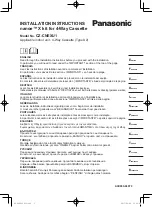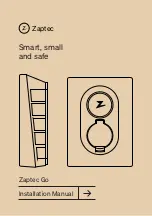
USER MANUAL
STM 550 / EMSI
–
ENOCEAN MULTISENSOR FOR IOT APPLICATIONS
© 2020 EnOcean | www.enocean.com F-710-017, V1.0
STM 550 / EMSI User Manual | v1.3 | September 2020 | Page 86/97
11.4
Illumination measurement
STM 550 offers the option to measure the ambient light level either via the ambient light
sensor or via the solar cell. This can be configured using the LIGHT_SENSOR_CFG register of
the NFC interface as described in chapter 9.5.15. By default, the ambient light sensor is used.
11.4.1
Ambient light sensor
The ambient light sensor measures and reports the light level with a spectral response close
to
the human eye’s perception of am
bient light. The following points should be considered
when using the ambient light sensor:
◼
Aperture
The sensor measures the light level within a small radius around its centre axis. If
the lighting conditions within that area are not representative for the overall condi-
tions, then the result might be different from expectation.
◼
Surface
The most common application for a ceiling-mounted illumination sensor is to measure
the light level at a working desk surface underneath. In this application, the meas-
ured light level depends on the reflectivity of the surface. Simply put, a dark desk
surface will give a totally different result compared to a white desk surface even when
the same luminous flow is directed towards it.
◼
Obstruction
Any obstruction between the sensor and the intended measurement area (desk sur-
face, window) will significantly impact the measurement result. Maintaining a clear
line of sight between measurement area and illuminations sensor is therefore essen-
tial.
◼
Interference
To ensure accurate measurement results, it is essential to minimize interference from
other light sources not contributing to the illumination at the target measurement
area. For instance, when measuring the light level at a desk surface, interference
might occur due to direct light from the window or from or upwards emission of
indirect light sources (floor lamps etc)
11.4.2
Solar cell
The solar cell has a much larger area and aperture compared to the ambient light sensor.
Therefore, the light level measured by the solar cell is typically more representative of the
average illumination within a wider area.
Note that the solar cell does not apply a spectral response curve close to
the human eye’s
perception of ambient light to the received illumination. The illumination reported by the solar
cell will therefore typically be larger than that reported by the ambient light sensor depending












































